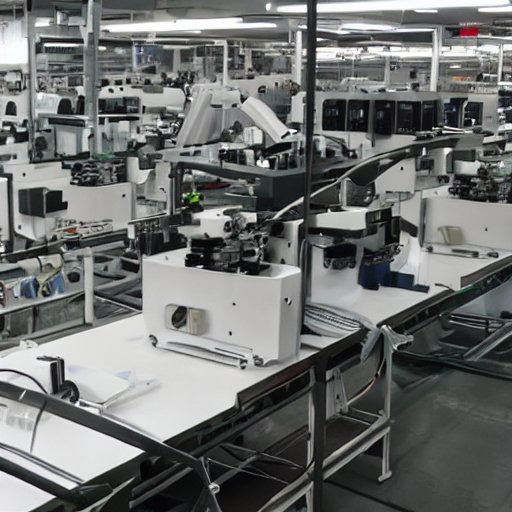|
Listen to the article
Getting your Trinity Audio player ready...
|
The role of technology in companies is essential for their long-term growth and success. However, many Latin American companies still do not invest in technology adequately, and this can have negative consequences on their performance and competitiveness. Among the main problems that arise in a company when the business culture does not value investment in technology, we can mention the following:
- Loss of competitiveness: The lack of investment in technology can mean that companies are not up-to-date with the latest trends and tools that their competitors are using, which can lead to the loss of customers and business opportunities.
- Inefficiency in processes: Companies that do not invest in technology may have obsolete and inefficient processes, which can lead to an increase in operating costs and a decrease in the quality of the products and services offered.
- Lack of innovation: Innovation is key to the long-term success of any company. Companies that do not invest in technology may fall behind in terms of innovation, which can mean the loss of market opportunities and new products or services.

On the other hand, there are some advantages and disadvantages of not investing in technology that we must consider:
Advantages:
• Lower immediate costs: Investing in technology can mean that a company does not have to incur large expenses on infrastructure or tools.
• Focus on core business: Companies that invest in technology can focus more on their core business, rather than being distracted by technological implementations.
Disadvantages:
- Loss of long-term competitiveness: as mentioned earlier, not investing in technology can cause a company to lose ground against its competitors.
- Higher risk of human errors: manual and obsolete processes can be more prone to human errors, which can lead to higher costs and loss of customers.
- Lower quality of products and services: inefficient processes and outdated systems can lead to a decrease in the quality of products and services offered by a company. A clear example of the effects of technology investment can be seen in the financial performance of companies. According to a study by McKinsey, companies that invest in technology have a superior financial performance than those that do not. This study demonstrated that companies that invest more in technology also have a higher rate of revenue growth and greater operational efficiency.
To illustrate the effects of technology investment on business performance, it is possible to compare companies that invest in technology versus those that do not.
Below are some examples of comparative charts to illustrate this situation.

| financial indicator | companies that invest in technology | Companies that do not invest in technology | |
| Growth of income | 8 % | 3% | |
| Profit margin | 15% | 10% | |
| return on assets (ROA) | 12% | 8% | |
| return on equity invested (ROI) | 18% | 12% |
they don’t
This comparative chart shows that companies that invest in technology have higher revenue growth, higher profit margins, and higher return on assets and invested capital than companies that do not invest in technology. These financial indicators indicate greater efficiency and productivity in the business management of companies that make these investments, such as computerized maintenance management systems (CMMS) or enterprise resource planning (ERP) systems.
| efficiency indicator operational | companies that invest in technology | Companies that do not invest in technology |
| average time of sales cycle | 60 days | 90 days |
| Percentage of deliveries to time | 95 % | 85 % |
| number of errors billing | 1 for every 1000 invoices | 5 for every 1000 invoices |
They do not do it
Companies that invest in technology have a shorter average sales cycle time, deliver more products and services on time, and have fewer billing errors. There are famous real cases of Latin American companies that have suffered the consequences of not investing in technology.
Case 1: Kodak
Kodak was a leading company in the photography industry for decades, but their lack of investment in digital technology led to their bankruptcy in 2012. Kodak failed to adapt to the shift in photographic technology, resulting in a decrease in demand for their products and services. While competitors such as Canon and Nikon had invested in digital technology, Kodak continued to rely on their analog technology, costing them the opportunity to lead in digital photography.
Case 2: BlockBuster
Blockbuster was a chain of movie and video game rental stores that was once a leader in the industry, but their lack of investment in online streaming technology and slow adaptation to new forms of media consumption led them to bankruptcy in 2010. Instead of investing in technology to offer an online movie viewing experience, Blockbuster relied on its physical stores. This strategy resulted in a loss of customers and a decrease in the company’s profitability, leading to its demise.
Case 3: Telmex
Telmex, a Mexican telecommunications company, has been criticized for its lack of investment in technology. The company has been slow to invest in emerging technologies such as fiber optics and mobile technology, which has led to a decrease in customer satisfaction and loss of customers to competitors who offer more modern and updated services.
These cases illustrate the negative effects that a lack of investment in technology can have on Latin American companies. If adequate investments in technology are not made, companies can miss out on growth opportunities and competitiveness in the market. “Companies that do not invest in technology also run the risk of losing customers and becoming obsolete in their sector.”

In contrast, companies that invest in technology can improve their efficiency, productivity, and profitability, and have more opportunities for growth and competitiveness in the market. Therefore, it is essential that Latin American companies understand the importance of technology in their business strategy and make the necessary investments to stay ahead in their sector.
On the other hand, there are Latin American companies that have invested in technology and have been leaders in their sector.
Case 1: MercadoLibre
MercadoLibre is an Argentine company that offers e-commerce services throughout Latin America. The company has achieved great success thanks to its investment in software technology, such as its highly customizable e-commerce platform and its online payment system.
MercadoLibre’s technology has enabled the company to offer a faster and simpler online shopping experience, which has been key to its success.
Case 2: Nubank
Nubank is a Brazilian company that offers online financial services and has achieved great success thanks to its highly customizable mobile application and online payment processing system.
Nubank’s technology has allowed the company to offer a faster and simpler online financial experience.
Case 3: Rappi
Rappi is a Colombian company that offers online delivery services for food, products, and services. They have achieved great success in Colombia thanks to their investment in software technology, being leaders in their sector with their mobile application and delivery logistics system.
Rappi’s technology has allowed the company to offer faster and more efficient delivery services.
Case 4: Despegar
Despegar is an Argentine company that offers travel and tourism services online. They have been successful in their country and in Latin America as the number one choice for purchasing airline tickets and hotel reservations, with their platform for flight and hotel reservations and their system of personalized recommendations.
The technology of Despegar has allowed the company to offer a simpler and more personalized online travel experience.
Case 5: Cornershop
Cornershop is a Chilean company that offers online grocery and retail delivery services. They are leaders in their sector thanks to their mobile application and delivery logistics system.
Cornershop’s technology has allowed the company to offer fast and efficient delivery services.
Case 6: Natura
Natura is a Brazilian company that offers beauty and personal care products online. Their management has been successful thanks to their online sales platform and order and delivery management system, achieving a simpler and more efficient online shopping experience.
Case 7: Amper
Amper is a Bolivian company that offers maintenance products and services to the electric and telecommunications sectors. They have become leaders in their sector thanks to the innovation in their processes and their focus on customer satisfaction through the use of CMMShere maintenance software, achieving high efficiency in the operation of the assets that their clients have entrusted to them.
How to change company culture to adopt technology
To change the corporate culture and adopt a technology adoption cycle, companies must implement a clear and well-structured strategy.
Some recommendations for companies looking to invest in technology and change their corporate culture are:
- Awareness and education: The first stage is to raise awareness among senior management about the importance of technology in the company. Business leaders must understand that technology can improve the efficiency, productivity, and profitability of the company. It is also important to educate employees about the importance of technology and how it can help in their daily work.
- Evaluation of existing technology: The company must conduct an evaluation of existing technology to identify areas that need improvement and update obsolete systems.
- Definition of objectives: The company must clearly define the objectives it expects to achieve through technology investment. The objectives should be measurable, specific, and achievable.
- Technology selection: The company must identify the most appropriate technologies for its objectives and needs. This may involve consulting with technology experts, conducting market research, and identifying industry best practices.
- Implementation planning: Once the appropriate technology has been selected, the company must carefully plan the implementation. This includes defining deadlines, allocating resources, defining responsibilities, and conducting tests.
- Employee training: It is important for employees to be trained to use the new technology. The company must invest in employee training and development to ensure they can use the technology effectively.
- Results evaluation: The company must conduct periodic evaluations to measure the impact of technology investment. This includes measuring results, comparing them to defined objectives, and identifying improvement opportunities.

How to obtain financing for investment in technology
To leverage technology investments in SME’s in Latin America, there are several financial tools available:
Bank loans: SME’s can obtain bank loans to finance their technology investments.Banks offer different types of loans, such as lines of credit, long-term loans, or leasing. Bank loans can be a good option for SMEs with a solid credit history and good repayment capacity.
Supplier financing: Some technology providers offer financing for the purchase of their products. This option can be attractive for SMEs that want to acquire specific technology and do not have enough liquidity to do so immediately. Monthly and annual technology payment plans are available depending on the company’s cash flow, thus adapting to each company’s situation.
Investment funds: Investment funds are an option for SME’s seeking long-term financing for their technology investments. These funds can provide capital in exchange for a stake in the company.
Crowdfunding: Crowdfunding is an alternative to obtain financing for specific projects. SME’s can present their project on a crowdfunding platform and obtain financing from individual investors, such as angel investors.
Grant and aid programs: SME’s may be eligible for grant and aid programs offered by governments and private organizations. These programs can provide financing for the acquisition of technology, employee training, and other expenses related to technology implementation.
Venture capital: Venture capital is an option for SME’s seeking financing for the growth phase of their business. Venture capital investors provide capital in exchange for a stake in the company and can provide helpful advice and contacts.
Additionally, there are aid policies in Bolivia, Colombia, and Ecuador to encourage investment in technology by companies:
In Bolivia, there are aid programs for companies seeking to invest in technology. The Ministry of Development Planning, through the Strengthening Competitiveness of Enterprises Program (PROFOCOM), offers advice and financing to companies for the adoption of technology and innovation in their production processes. The program also offers technical assistance and training to companies.
In Colombia, the government has created aid programs to encourage technology adoption by companies. The Ministry of Information Technology and Communications offers financing to companies for technology adoption and employee training. There are also grant and aid programs for companies seeking to develop technology and innovation projects.
In Ecuador, the government has established policies to encourage investment in technology. The Ministry of Telecommunications and the Information Society offers financing programs for companies seeking to acquire technology and develop innovation projects. In addition, there are technical assistance and training programs to help companies in the technology adoption process.
Three success factors when investing in technology
Focus on the customer: Latin American companies that successfully invest in technology focus on offering an exceptional customer experience, aligning the technologies they use with the needs and desires of their customers. Companies that take the time to understand the needs and desires of their customers and use technology to offer personalized and efficient solutions are more likely to succeed.
Corporate culture: Investment in technology can also be a driver of innovative corporate culture. Latin American companies that adopt a corporate culture that values innovation and experimentation may be more likely to invest in technology and adopt new solutions. In addition, an innovative corporate culture can foster creativity, collaboration, and continuous improvement, which can generate additional benefits for the company.
Innovation: Latin American companies that successfully invest in technology do not settle for following the same processes and strategies as always. Instead, they continuously seek new ways to improve and optimize their business through innovation. Investment in technology can help companies develop new solutions and business models, which can generate a significant competitive advantage.
Do you want to learn about CMMShere? Contact us here or leave your information in the chatbot on our website and a representative from our company will contact you as soon as possible.





No comment yet, add your voice below!